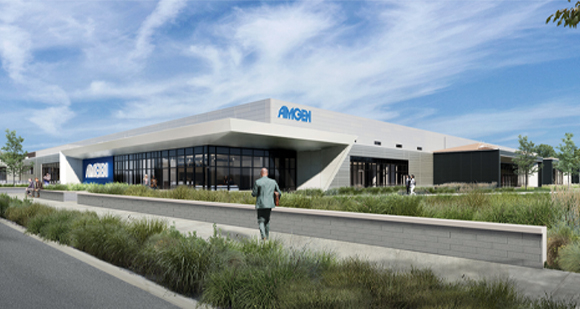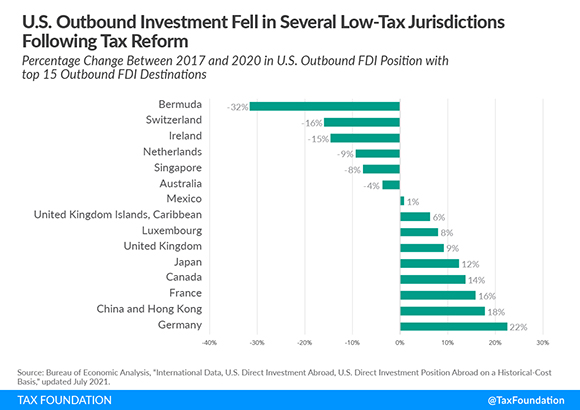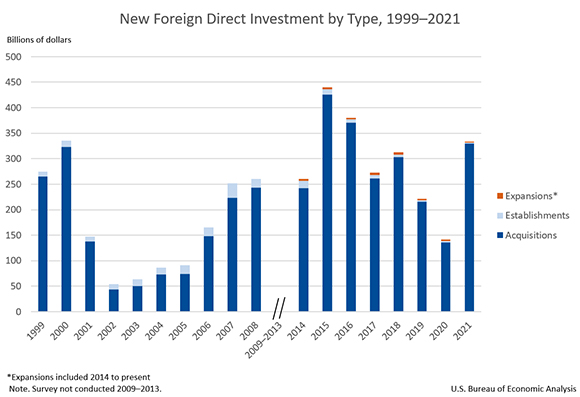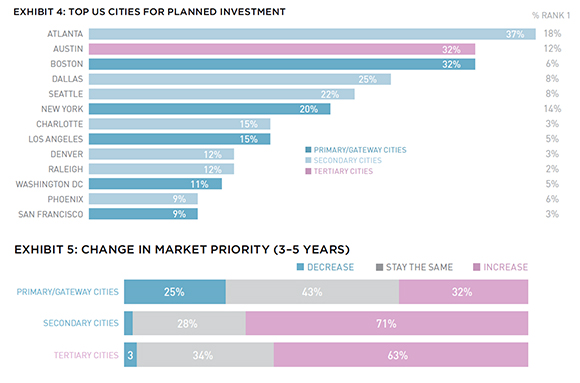|



|
FROM SITE SELECTION
MAGAZINE, July 2022 ISSUE
|

|
STARTUP & INNOVATION HUBS
Contenders for Silicon Valley’s top ranking abound in Global Startup
Ecosystems Report 2022.
|
|

|
INVESTMENT PROFILE: COLUMBUS REGION, OHIO
From Amgen to Sarepta, biomedical companies bet big on the Columbus
Region.
|
|
|
CONWAY ANALYTICS
SNAPSHOT
|

|
Graph courtesy of The Tax Foundation
|
|
Three new reports involving foreign direct investment (FDI) invite some
data triangulation. First, the Tax Foundation on the last day of June called for an international tax agenda for
Congress on the first anniversary of the global tax reform deal
reached by 130 countries. The Foundation looks further back than that,
to 2017, when international tax reforms in the Tax Cuts and Jobs Act
(TCJA) “shifted how U.S. companies structure their investments abroad
and have led to onshoring of intellectual property (IP).” In other
words, even as the Build Back Better Act aims to further reform
taxation, it’s worth looking at what was already accomplished by the
TCJA.
“The first global minimum tax was adopted by the U.S. as part of the
TCJA,” the Foundation’s Daniel Bunn writes, noting the aptly named
“GILTI” policy (for “Global Intangible Low-Tax Income”) that changed the
incentives for where multinationals invest or hold their assets. “Other
important reforms included the reduction in the federal corporate tax
rate from 35% to 21%, an incentive for holding IP within the U.S. (the
Foreign Derived Intangible Income or FDII), and a disincentive for
cross-border cost shifting (the Base Erosion and Anti-abuse Tax or
BEAT),” Bunn writes. The graph above shows one of several positive
effects: the drop in global outbound FDI to certain countries since the
2017 tax reform.
Yesterday, the U.S. Bureau of Economic Analysis released data on U.S. inward FDI in 2021
(including acquisitions as well as greenfield establishments and
expansions). Total expenditures came to $333.6 billion (preliminary), an
increase of $192.2 billion (136%) from $141.4 billion (revised) in 2020,
and above the annual average of $289.7 billion for 2014–2020.
“Greenfield investment expenditures — expenditures to either establish a
new U.S. business or to expand an existing foreign-owned U.S. business —
were $3.4 billion in 2021. For greenfield investment initiated in 2021,
total planned expenditures until completion, which include both
first-year and future expenditures, were $15.6 billion,” the BEA said.
Texas led all states in total inward FDI ($0.9 billion). Pennsylvania
had the largest employment resulting from new investment (44,700),
followed by California (43,600) and New York (14,500), the BEA stated,
before noting the odd attribution of such jobs: “Employment for an
acquired entity that operated in multiple states is attributed to the
state in which it had the greatest number of employees.” The graph below
shows total inward U.S. FDI by year going back to 1999.
A third source provides further context: Harry Moser’s Reshoring
Initiative on May 31 released its latest
report on total reshoring and FDI in 2021, concluding that job
announcements from both involved a record 261,000 jobs from more than
1,800 companies, “bringing the total jobs announced since 2010 to over
1.3 million.” For the second year in a row, the report said, reshoring
exceeded FDI by 100%, in contrast to 2014 thru 2019 when FDI exceeded
reshoring.” Among the findings: Reshoring from Asia is about 10 times
that from Western Europe. And Texas led all states in jobs announced,
followed by Tennessee. — Adam Bruns
|

|
Graph courtesy of the U.S. BEA
|
|
  |
|
2022 MISSISSIPPI
DEVELOPMENT GUIDE
|

|
MISSISSIPPI DEVELOPMENT AUTHORITY Q&A
The best quality of life at the lowest price? Laura Hipp, deputy
executive director of the Mississippi Development Authority, explains
how Mississippi does it.
|
|

|
WORKFORCE
Ryan Miller, executive director of Accelerate Mississippi, sheds light
on how the state is connecting jobs and people in innovative ways.
|
|
  |
United Kingdom
As the UK Prime Minister resigns his post, companies continue to re-sign
and grow in the UK. Yesterday, DHL eCommerce Solutions announced plans
to invest €560 million across its UK e-commerce operation, DHL Parcel
UK. Nearly half of that amount will go toward a new 25,000-sq.-m. hub in
SEGRO Park Coventry Gateway, located south of Coventry Airport. The new
facility will have the capacity to handle over 500,000 items per day and
is expected to create over 600 new jobs. Another €75 million will be
spent on upgrading the company’s fleet, mostly to alternative fuel or
electric vehicles. The balance of the total investment amount (over €220
million) will create 10 new collection and delivery depots across the
UK, and support expansion at 20 existing sites. The new and expanded
depots will create an additional 3,500 jobs. “The locations of the new
sites have been strategically chosen to reduce the distance required to
serve customers, enabling further roll-out of electric vans and
improving speed of service,” said the company, without providing details
about where those locations are. “The Covid pandemic has not only driven
digitalization, but also significantly changed consumer behavior,
rapidly accelerating the growth of e-commerce and shifting shopping
habits,” said Pablo Ciano, executive vice president of corporate
development at Deutsche Post DHL Group and designated CEO of DHL
eCommerce Solutions. “At Deutsche Post DHL Group, we believe this shift
to online shopping will remain intact and, as e-commerce is one of the
important pillars in our Group Strategy 2025, we’ll continue to invest
in the sector.”
Pennsylvania
Northern Ireland–based contract pharmaceutical development and
manufacturing organization Almac Group announced on the last day of June
this North American headquarters expansion in Souderton in Montgomery
County — halfway between Philadelphia and Allentown along Highway 309 —
as well as upgrades to company sites in nearby Audubon and Lansdale.
Supported by a number of state incentive programs, the CDMO has
committed to creating at least 355 new jobs, retaining 1,434 existing
jobs and investing approximately $93.5 million into the project within
the next three years.” The news came two weeks after the ribbon-cutting
for a new student careers experience center at Souderton Area High
School, marking the culmination of a three-year partnership among Almac
Group, Indian Valley Education Foundation and Souderton Area School
District. Around the same time, the company announced a £200 million
(US$240 million) global capital investment plan to meet increased client
demand over the next three years, with growth to occur at locations in
Northern Ireland, other sites in the UK, Europe, North America and Asia.
“Current employee numbers for the Group now sit at over 6,500 and a
current global recruitment drive will increase the total number to over
8,000 over the next three years,” said the company, “with over 1,000 of
these new roles planned for Northern Ireland.”
|
|
|
SITE SELECTION
RECOMMENDS
|

CREDIT: Graph courtesy of AFIRE
|
AFIRE, the Association for International Real Estate Investors focused
on commercial property in the U.S., in May released the 2022 edition of
its annual international investor survey, “Marching Backwards Into the Future.” Among the
findings, institutional commercial real estate investors rate actionable
climate change strategies and carbon footprint reduction measures as
extremely important criteria, and the vast majority of these investors
say they are willing to accept lower returns on their investments in
exchange for environmental benefits. The graph shows AFIRE members’ top
U.S. cities for planned investment, led by Atlanta, Austin and Boston.
|
|

|
Photo by Ron Van Oers © UNESCO
|
|
As vacationers hit the road this summer fully aware of how the high
price of gas might limit their plans, this photo accompanied a recent
release announcing the completion of a NextGen Highways Feasibility
Study for the Minnesota Department of Transportation by The Ray and NGI
Consulting. Its focus? The strategic co-location of high-voltage direct
current electric transmission lines and communications infrastructure in
the highway right-of-way. The group called it “a first step for the
NextGen Highways team as it works to reimagine the nation’s highway
system on the heels of the passage of the Infrastructure Investment and
Jobs Act (IIJA) of 2021 and the federal government’s historic
infrastructure investment.” In April 2021, the two organizations
explained, the Federal Highway Administration released guidance
clarifying the highway ROW “can be leveraged by State DOTs for pressing
public needs relating to climate change, equitable communications
access, and energy reliability.”
“To support clean vehicle electrification, our existing transportation
infrastructure will need to evolve to incorporate the infrastructure to
power and connect these vehicles,” said Laura Rogers, deputy director of
The Ray, the nonprofit charity and net-zero highway testbed named for
the late green business advocate Ray C. Anderson and located on 18 miles
of I-85 between LaGrange, Georgia, and the Georgia-Alabama state line.
“This feasibility study demonstrates that states can use existing
publicly-owned land to help solve our Nation’s greatest and immediate
challenges in the energy, transportation and communications sectors.”
|
|
|
|

